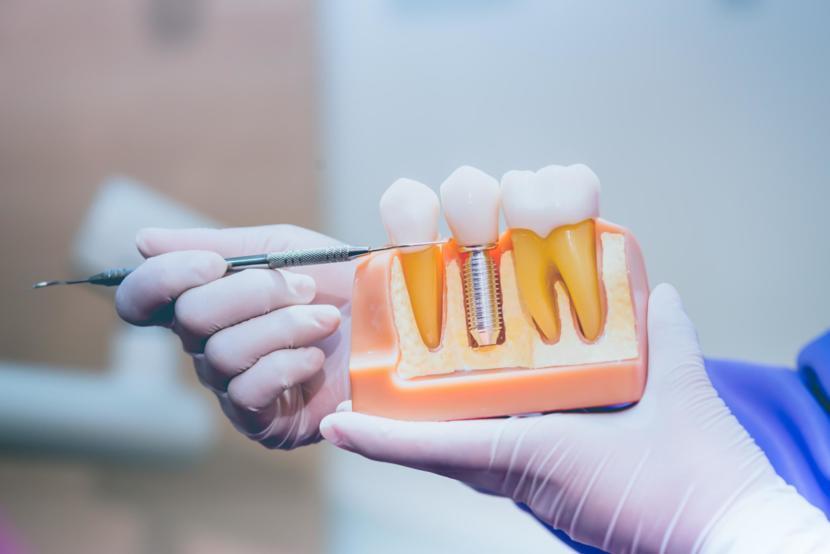Exploring the Remarkable History of Dental Implants

Dr. Jayme A. Oliveira Filho (Dr. O) was born in Brazil on 1976. He finished his dental school at Federal University of Ceara School of Dentistry in 1999. Dr. O practiced dentistry in Brazil for 5 years until, where he did his post-graduation in dental prosthetics. He moved with his family to the United States in 2003 to... more
Introduction:
Throughout history, mankind has sought innovative solutions to overcome dental challenges. Dental implants, considered a breakthrough in dental technology, have revolutionized the field of dentistry by providing a durable and long-lasting solution for missing teeth. This article delves into the fascinating history of dental implants, tracing their origins, evolution, and remarkable advancements.
Ancient Beginnings:
The concept of dental implants can be traced back to ancient civilizations. Archaeological evidence suggests that ancient Egyptians used seashells and animal teeth as rudimentary implants. These early attempts at tooth replacement aimed to restore oral function and improve aesthetics.
Early Modern Era:
It was not until the 18th century that significant progress was made in the field of dental implants. In 1766, the French surgeon, Dr. Pierre Fauchard, is credited with introducing the idea of using metal frameworks to support artificial teeth. This early form of dental implant involved placing a gold or ivory base into the jawbone, providing stability for replacement teeth.
However, these early attempts often faced failure due to issues such as infection and rejection by the body. Despite setbacks, this marked the first step towards the development of modern dental implants.
The Per-Ingvar Brånemark Era:
The true breakthrough in dental implant technology came in the 1950s, when Swedish orthopedic surgeon Dr. Per-Ingvar Brånemark accidentally discovered osseointegration. During an experiment, he observed that titanium could integrate with living bone tissue, leading to the birth of modern dental implantology.
In the 1960s, Brånemark successfully placed the first titanium dental implant into a human volunteer. Over time, the implant fused with the surrounding bone, demonstrating exceptional stability and durability. This discovery revolutionized the field and laid the foundation for future advancements.
Technological Advancements:
As the understanding of osseointegration grew, researchers and dental professionals made remarkable advancements in dental implant technology. Throughout the latter half of the 20th century and into the 21st century, various improvements have been made to enhance the success rate, functionality, and aesthetics of dental implants.
One significant development was the introduction of endosseous implants, which are placed directly into the jawbone. The introduction of high-quality materials like titanium and ceramic further improved the longevity and biocompatibility of dental implants.
Moreover, advancements in imaging technology, such as 3D dental scanning and computer-aided design (CAD) and computer-aided manufacturing (CAM), have revolutionized the planning and placement of dental implants. These technologies enable precise placement, ensuring optimal aesthetics and functionality.
Contemporary Innovations:
In recent years, dental implantology has witnessed exciting innovations and techniques aimed at further improving the patient experience. Immediate load implants, also known as "teeth in a day," allow for the placement of temporary or permanent prosthetics on the same day as the implant surgery.
Mini dental implants, with their smaller diameter, offer an alternative for patients with insufficient bone volume or who are not suitable candidates for traditional implants. They provide a less invasive option for tooth replacement and can often be placed without the need for a surgical incision.
Future Prospects:
Looking ahead, the field of dental implants continues to evolve with ongoing research and technological advancements. Scientists are exploring new materials, such as bioactive ceramics and tissue-engineered constructs, that may further enhance osseointegration and improve implant success rates.
Moreover, advancements in regenerative medicine, including stem cell therapy and tissue engineering, hold great promise for the regeneration of dental tissues and the growth of new teeth. These groundbreaking developments may one day lead to a biological solution for tooth replacement.
Conclusion:
The history of dental implants is a testament to human ingenuity and the relentless pursuit of finding effective ways to treat debilitating aspects of human dental health.









